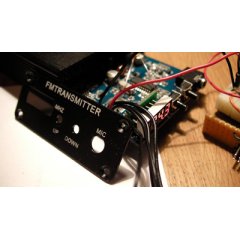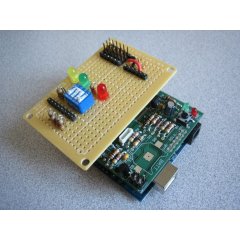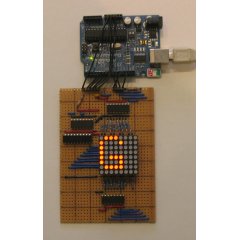Categories
- animatronics (12)
- apple (11)
- arduino (179)
- art (41)
- articles (121)
- artificial intelligence (11)
- automation (421)
- avr (205)
- bitcoin (3)
- breadboard (9)
- cameras (57)
- cars (26)
- cell phones (28)
- clothing mods (21)
- console mods (26)
- dangerous (94)
- desktop mods (24)
- embedded (5)
- flying things (54)
- fpga (22)
- gaming creations (108)
- interface (225)
- internet (17)
- laptop mods (6)
- lasers (22)
- linux (7)
- magnetic (3)
- medical (12)
- microcontrollers (51)
- misc projects (152)
- msp (12)
- music (124)
- pic (90)
- projects (23)
- pyroedu (76)
- raspberry pi (26)
- robots (312)
- security (36)
- sensors (307)
- software (200)
- solar (19)
- stamp (9)
- tools (149)
- tutorials (98)
- Uncategorized (45)
- usb (44)
- wireless (256)
Sponsors


Posted February 1, 2013 by Chris
“This hack is about rewriting the firmware of PLL FM transmitters based on AVR microcontrollers to add more functionalities. They’re commonly available on eBay from various sellers and for prices ranging from $40 to $80, depending mostly on the RF output power.”

Posted January 18, 2013 by Chris
“It is rare that I do a micro project without using a PCB or a prototyping board of some kind. Something like a arduino Pro Mini is cheap enough but they are still bigger and more expensive than a bare chip. Most of my home project don’t need a crystal clock and often only use a small number of I/O pins.”

Posted January 14, 2013 by Chris
“Doing some initial research on automatic door knockers, I came across an excellent post describing a secret knock-detecting door. This looked like a perfect starting point, so I decided to recreate it with my own hardware. To simplify input and output, I started with a simple button for input and an LED for output. I took the code provided and modified it so that it replayed rather than validating the recorded knock pattern.”

Posted January 9, 2013 by Chris
“A while back, a few friends and me were joking about what people would do when all the sudden, instead of going back and forth, the cat’s arm would start moving sideways. The idea had been stuck in my head ever since then, and now, we’re about to find out. So, let’s hack a beckoning cat.”

Posted January 4, 2013 by Chris
“The purpose of this project was to create a simple, portable device that would periodically read sensors and then store the sensor data so it could be retrieved later.The result is the HexiLogger, ‘hexi’ because it can support up to six different sensor inputs and ‘logger’ because it will store the input data on a removable SD memory card.”

Posted December 29, 2012 by Chris
“Driving a shift register using an AVR chip’s built-in hardware is really quite easy. Most of their offerings have an SPI module, or Serial Peripheral Interface. A shift register is exactly that, a peripheral device that communicates via a serial line. All we need to do is hook up our connections and use a few pieces of simple code. Join me after the break to see how that’s done.”

Posted December 28, 2012 by Chris
“Last Sunday I gave a workshop in TOG as part of its Engineer’s Week 2011 activities. We spent the day assembling an 8×8 Red/Green LED Matrix Display circuit which I designed in strip board. The circuit forms an interface between a micro controller and an 8 by 8 Dual Color Common Anode LED Module.”

Posted December 23, 2012 by Chris
“AvrPhone is a simple mobile phone with touchscreen. His brain is microcontroller AVR ATmega128 (128 kB flash, 4 kB SRAM) and user interface, the 2.4 “LCD display with touch foil and controller ILI9325B , equipped with a 16-bit bus. The entire system is powered by a 3.7 V/1000 mAh Li-Pol battery.”

Posted December 19, 2012 by Chris
“The FFT operations are done in 16-bit fixed-point. These 128 point FFT processes, applying window, butterfly operations and scalar output, could be executed in real-time (within 7.3 msec). This is pretty fast considering it is processed with only a cheap microcontroller. The spectrum bars are displayed in order of fundamental frequency x 0 (DC component), fundamental frequency x 1, x2, x3, … from left to right.”

Posted December 16, 2012 by Chris
“The system uses accelerometers to detect the user’s head tilt in order to direct mouse movement on the monitor. The clicking of the mouse is activated by the user’s eye blinking through a reflective sensor. The keyboard function is implemented by allowing the user to scroll through letters with head tilt and with eye blinking as the selection mechanism.”






